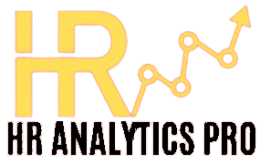Performance Planning
February 29, 2024 2024-02-29 14:18Performance Planning
Performance Planning
Performance management is a determined strategy for assessing and boosting employees’ performance in their jobs. The human resources teams usually have to oversee the implementation of these strategies which means HR must build a method that is consistent, works well, and is easy for everyone to use. Performance planning must also make sure the goals of the employees align with the company’s goals, and that they can achieve them.
Understanding Performance Planning
Performance planning is a determined approach that involves setting clear, measurable objectives for employees that aligns with the company’s strategic direction. Because performance planning sets clear goals aligned with the company’s direction and focuses on how to achieve them, it helps create a culture where employees continuously improve and find success.
An important part of performance management is that it not only focuses on what needs to be achieved but also on how those goals should be accomplished.
The Process of Performance Planning
Performance planning is more than just a yearly appraisal; it’s an ongoing cycle that encompasses several key steps:
Goal Setting
The foundation of performance planning is goal setting. These goals should be SMART (Specific, Measurable, Achievable, Relevant, and Time-bound). By aligning individual goals with the company’s vision, employees understand their contribution to the bigger picture.
Defining Roles and Expectations
Clear communication of roles and expectations eliminates ambiguity, enabling employees to focus their efforts in the right direction. It includes outlining specific responsibilities and the standards of performance expected.
Creating an Action Plan
An effective action plan breaks down the goals into smaller, manageable tasks. It may involve identifying resources, training needs, and timelines. This step is crucial for providing a clear roadmap for employees to follow.
Continuous Monitoring and Feedback
Regular check-ins and feedback are essential. This ongoing process helps in addressing challenges promptly and keeps employees motivated and engaged.
Review and Adjustments
Performance planning is flexible; it allows for adjustments based on changes in organizational goals, market dynamics, or employee development needs.
Benefits of Performance Planning
Performance planning offers numerous benefits
- Enhanced Clarity and Focus: It provides employees with a clear understanding of what is expected of them, thereby enhancing focus and productivity.
- Improved Communication: Regular discussions between managers and employees improve communication and understanding.
- Employee Development: It identifies areas for growth and development, leading to skill enhancement and career progression.
- Organizational Alignment: It ensures that everyone works towards common objectives, fostering a unified direction.
Challenges in Performance Planning
Despite its benefits, performance planning can face challenges such as:
- Resistance to Change: Employees may be wary of new processes or goals.
- Lack of Effective Communication: Misunderstandings can lead to misaligned goals and expectations.
- Inadequate Resources: Without the necessary resources and support, achieving goals can be difficult.
Best Practices for Effective Performance Planning
To overcome these challenges, organizations can adopt certain best practices:
- Engage Employees in the Goal-Setting Process: This promotes ownership and commitment.
- Ensure Regular Feedback and Support: Continuous support and constructive feedback are crucial.
- Flexibility and Adaptability: Be prepared to adjust goals as per changing circumstances.
Conclusion
Performance planning is key to a thriving business – it’s the glue that links individual work with broader company goals, fostering mutual success. You can’t sidestep performance planning—it’s a total game-changer. It connects the work of each person to the bigger goals of the company, making a situation where both the workers and the company do well together.






